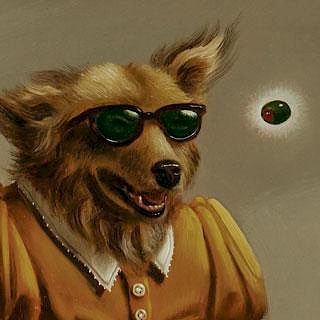Larry Poons (American, b. 1937) Untitled
Lot 423
About Seller
Bonhams Skinner
274 Cedar Hill Street
Marlborough, MA 01752
United States
Founded over four decades ago, Bonhams Skinner offers more than 60 auctions annually. Bonhams Skinner auctions reach an international audience and showcase the unique, rare, and beautiful in dozens of categories, including the fine and decorative arts, jewelry, modern design, musical instruments, sc...Read more
Categories
Estimate:
$20,000 - $40,000
Absentee vs Live bid
Two ways to bid:
- Leave a max absentee bid and the platform will bid on your behalf up to your maximum bid during the live auction.
- Bid live during the auction and your bids will be submitted real-time to the auctioneer.
Bid Increments
| Price | Bid Increment |
|---|---|
| $0 | $10 |
| $100 | $25 |
| $500 | $50 |
| $1,000 | $100 |
| $3,000 | $250 |
| $5,000 | $500 |
| $10,000 | $1,000 |
| $30,000 | $2,500 |
| $50,000 | $5,000 |
| $100,000 | $10,000 |
| $300,000 | $25,000 |
| $500,000 | $50,000 |
| $1,000,000 | $100,000 |
About Auction
By Bonhams Skinner
Sep 27, 2017 - Sep 28, 2017
Set Reminder
2017-09-27 16:00:00
2017-09-28 16:00:00
America/New_York
Bidsquare
Bidsquare : Fine Paintings & Sculpture
https://www.bidsquare.com/auctions/skinner/fine-paintings-sculpture-2653
Bonhams Skinner bidsquare@bonhamsskinner.com
Bonhams Skinner bidsquare@bonhamsskinner.com
- Lot Description
Larry Poons (American, b. 1937)
Untitled
Dated and signed "1981/Larry Poons" on the reverse, inscribed "81 F-8/..." on the reverse, with a label and stamp from Andre Emmerich Gallery Inc., New York, and a label from Hokin Gallery, Inc., Palm Beach, Florida, on the stretcher.
Acrylic on canvas, 83 3/8 x 21 1/2 in. (211.8 x 54.6 cm), framed.
Condition: Minor surface grime.
Provenance: Hokin Gallery, Palm Beach, Florida; Andre Emmerich Gallery, New York, 1982; to a private Massachusetts collection.
N.B. Participating in his first major group show in 1965 and still working today, Larry Poons has had a long and successful career. First associated with Op Art (his contribution to that first group show, "The Responsive Eye" at The Museum of Modern Art, was Nixe's Mate, 1964, a large red canvas with an orderly array of oval dots spread across its surface), Poons began experimenting with acrylic paint in the early 1970s in a manner most similar to the Abstract Expressionists. He threw and poured the paint onto huge canvases he rolled out to cover the walls of his studio. He would spend several painting sessions working on a mural-sized canvas, then he would isolate areas of the canvas with masking tape and cut those out into smaller compositions.
Though very physical in his methods, and necessarily at the mercy of uncontrollable forces such as gravity, Poons concentrated on the formal qualities of color, texture, format, and scale. Colonial (Lot 424) perfectly exhibits Poons's interest in density-for this work, he applied a large amount of paint to the canvas, layering and mixing to create an immediate impression of deep, dark color. However, Poons began with a generous splash of pastel pink which, along with aqua and bright lemon yellow, occupies the uppermost portion of this long, narrow canvas. With the help of gravity, he pulled the paint downwards into strong vertical rivulets of intense eggplant and earthy brown, shot through with stripes of bright turquoise, orange, and crimson. As the pigment slides down, it clots, pools, and drips along the way, and the shades grow deeper and darker in tone. Pockmarks left by air bubbles and a few deep crevices (drying cracks) give character to the thick and otherwise smooth texture of the surface.
Poons played even more with texture in this untitled work (Lot 423), in which areas of thick impasto contrast with sections of paint that are thin enough for the weave of the underlying canvas to be discernible. Many stretches of paint have a rough texture, where Poons must have added something like sand to the acrylic. In the 1980s, when he created this work and Colonial, Poons began to obstruct gravity's pull on the flow of paint by placing various objects, including crumpled paper and pieces of foam, on the canvas. Around these obstacles, the paint formed bulges, peaks, and chasms. The hues in this untitled painting are more muted than those in Colonial-pastel yellows, peaches, and white, though streaks of fuchsia and royal blue prevent the work from being meditative.
While indebted to Jackson Pollock in the physicality of his method, Poons expanded upon Pollock's drips and pours by using the power of his entire body to hurl large amounts of paint onto canvases (as opposed to Pollock's elegant, dance-like movements). Poons's works of the 1970s and 1980s are dense in both texture (thick layers of paint) and color (rich, surprising combinations add to the sense of depth). Poons is often associated with Color Field painters like Kenneth Noland and Helen Frankenthaler; however, while color certainly plays a distinct role in Poons's work, it does not supersede considerations of scale, texture, and gesture.
Estimate $20,000-40,000
No additional condition issues to report.
The absence of a condition statement does not imply that the lot is in perfect condition or completely free from wear and tear, imperfections or the effects of aging. Condition requests can be obtained via email (lot inquiry button) or by telephone to the appropriate gallery location (Boston/617.350.5400 or Marlborough/508.970.3000). Any condition statement given, as a courtesy to a client, is only an opinion and should not be treated as a statement of fact. Skinner Inc. shall have no responsibility for any error or omission. - Shipping Info
-
Please visit http://www.skinnerinc.com/services/payment-and-shipping/ for information regarding the collection of items purchased at auction.
-
- Buyer's Premium



 EUR
EUR CAD
CAD AUD
AUD GBP
GBP MXN
MXN HKD
HKD CNY
CNY MYR
MYR SEK
SEK SGD
SGD CHF
CHF THB
THB











